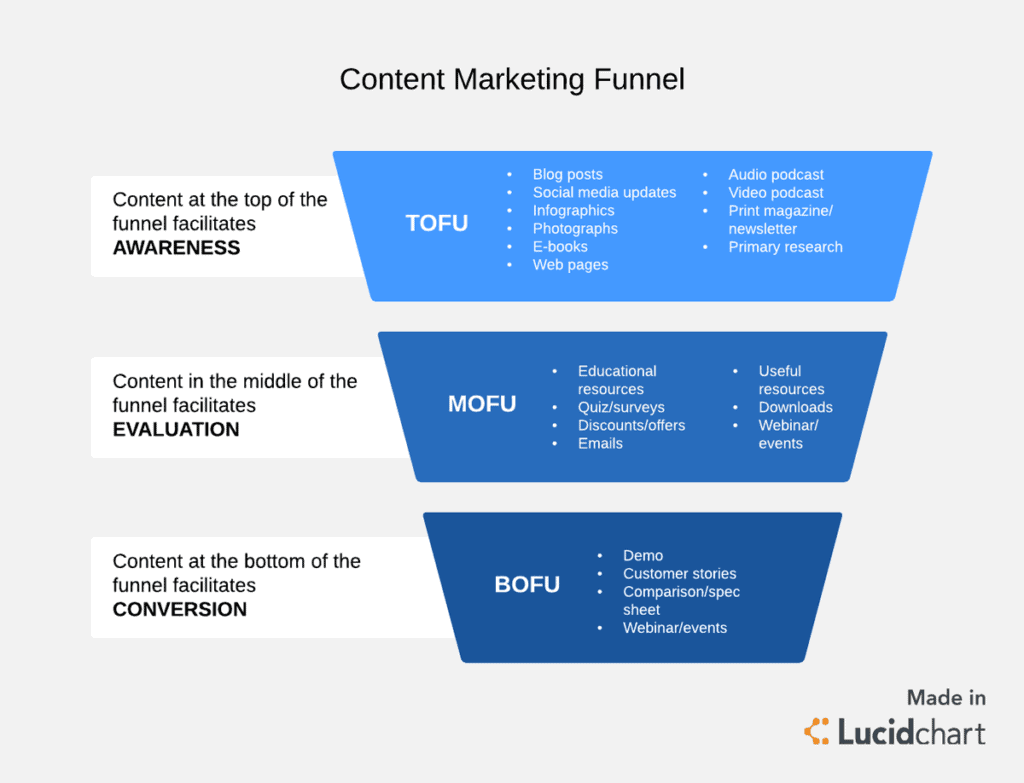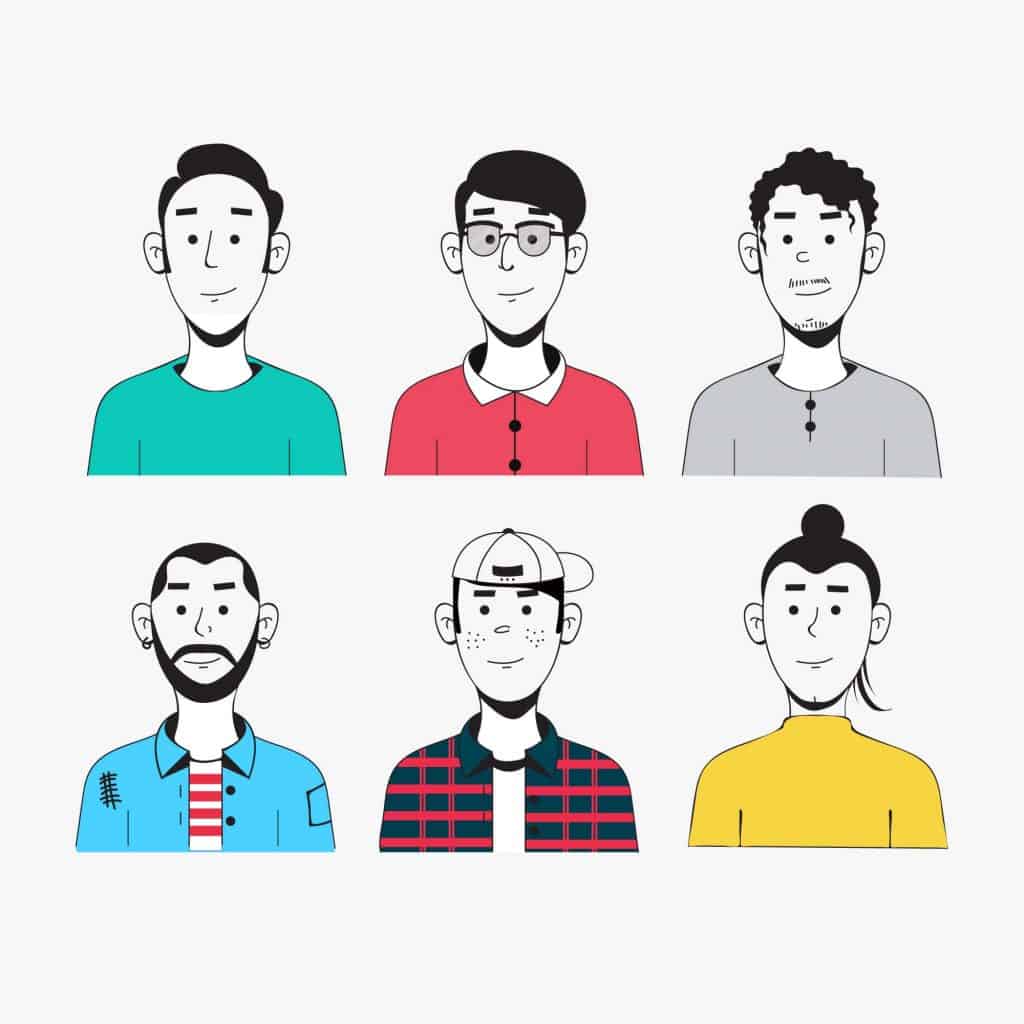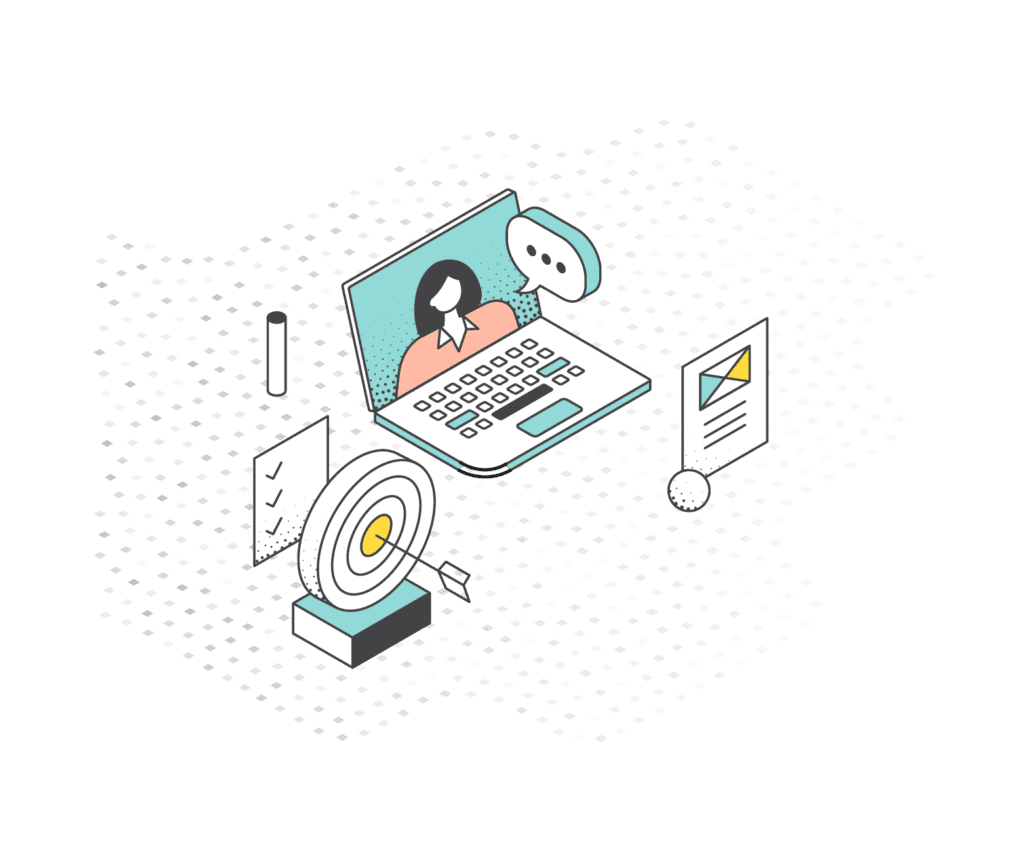Content Funnels: How to Hook Readers
Have you ever felt you're shouting into the void when publishing content online? You spend hours researching and writing helpful articles or social media posts, but hardly anyone reads them. It's frustrating!
But what if I told you that low readership doesn't necessarily mean your content sucks? The problem lies in how you're structuring and targeting your content.
Enter content funnels. If you arrange your content correctly – like a funnel that draws readers further down with each piece – you can turn even the most disengaged visitor into an email subscriber, loyal reader, or paying customer.
Intrigued? Read on to learn what content funnels are, why they work so well, and tips for building your own to skyrocket readership.
Table of Contents
What Are Content Funnels and Why Do They Work?

A content funnel organises your content to lead readers from awareness to conversion. Using a customer's journey from first encountering your brand to becoming a buyer, you'll create targeted content that moves them to the next step.
Here's a simple example…
The Awareness Stage
At the top, where your content funnel is most comprehensive, you have content focused solely on raising awareness. The goal is to introduce yourself and grab attention without worrying about conversions.
Blog posts, social media updates, and guest articles work well for increasing awareness about your:
- Brand
- Products/services
- Industry expertise
For example, an HR consultant might publish data-backed articles about employee retention strategies. The content targets readers who are interested in that issue but are not ready to hire anyone yet.
The Consideration Stage
As you move readers further into the funnel, they consider if you can help them. Now, you'll want to publish content highlighting specific solutions you provide.
This stage builds trust and credibility around your brand as an authority readers can rely on. Helpful content types include:
- Case studies
- Ebooks/guides
- Webinars
- Product demos
Our HR consultant could provide a case study showing how their retention framework increased employee tenure by 35% at a client company.
The Decision Stage
Readers at this last stage, near the bottom of the funnel, decide if they'll become customers. The content here aims to persuade them that your solution is the right choice over competitors.
Some conversion-focused content includes:
- Free trials
- Consultations
- Proposals/quotes
- Coupons
The HR consultant might offer a free 30-minute consultation for anyone struggling with turnover issues. This gives prospects a taste of what it's like working with them.
Content funnels guide readers from low to high commitment with tailored content at each awareness level. When done right, you turn cold traffic into loyal brand advocates who buy from you repeatedly.
Now, let's explore a simple framework for building your funnel.
A Step-By-Step Guide to Constructing Your Own

When creating an effective content funnel, follow these steps:
#1. Define Your Target Audience
Get crystal clear on who you serve. Outline common pain points and questions that keep your audience up at night. Being highly specific here ensures you create content that truly resonates.
For example, a funeral home might target grieving widows struggling with logistics and emotions when planning services.
#2. Map Out the Customer Journey
Walk through a typical customer's path from initial interest to becoming a repeat buyer. Jot down how their questions, concerns, and willingness to buy evolve at each stage.
This will naturally form an awareness ladder you can target with your funnel. Our funeral home may see a journey progressing from questions about costs → anxiety over coordinating events, → need for post-loss grief support.
#3. Develop a Content Strategy For Each Level
Now, match targeted content to move readers down the journey. Use their evolving questions and readiness to buy as a guide.
At the top, raise curiosity and authority with informational articles. In the middle, showcase expertise through case studies and demos. At the final stage, promote sales offers and frictionless buying.
Remember to incorporate SEO keywords to ensure you get found by people at different funnel stages. Track analytics to see what topics perform best at each level over time.
#4. Promote Relentlessly!
You'll need to publish WAY more content than you initially thought to keep readers flowing. Set an ambitious monthly or quarterly quota for publishing that forces you outside your comfort zone.
Twenty blogs a month is daunting but almost necessary. You need a high quantity of content across multiple topics to catch reader interest amid fierce online competition.
Besides creating relentlessly, I also promote across multiple channels – email, social media, paid ads, guest posts, etc. Leave no readers undiscovered!
Now, let's explore key funnel content types that convert.
Crafting Magnetic Content For Each Funnel Stage

Not all content plays the same role in moving readers down the journey. With extra planning around format, design, and promotion, you can create high-converting assets perfectly matched to each funnel stage.
Driving Discovery Blog Articles
Blogs demonstrating broad subject mastery readers initially seek when discovering solutions online. You have space for nuanced takes they won't find elsewhere.
Make discovery blogs stand out by:
- Optimising titles/intros to capture attention fast
- Including rich insights from experience
- Crafting scannable content with subheads and bullets
- Closing with a CTA to your funnel's next level
Building Credibility Through Case Studies
According to 73% of B2B buyers, case studies are crucial to evaluating solutions, so they're perfect for mid-funnel credibility building.
Make your case studies persuasive by including the following:
- A client's verifiable background/authority
- Hard ROI numbers/stats from results
- Enough detail for readers to picture the process
- Client testimonials woven throughout
Generating Leads With Free Tools
Free worksheets, calculators, or assessments let readers experience your expertise first-hand, so they work fantastically for lead gen.
Improve these tools' conversions by:
- Promising specific insights, readers will gain knowledge
- Gating access behind an email signup
- Keeping questions ultra-targeted
- Offering instantly sharable results
Closing Deals Through Sales Pages
Finally, sales pages near the funnel's end must make buying frictionless, a no-brainer. Summit key benefits, weave in social proof, and hit pricing/USPs hard!
Now, let's cover some top tips for funnel growth after launch.
Expanding Reach Through Promotions and Repurposing

You likely won't gain much funnel traction organically at first. But your authority and conversions will compound over time by relentlessly promoting and repurposing content across channels.
Here are my top strategies for growth:
Pitch Guest Article Slots
Reaching an existing publication's audience lets you tap into a potential customer base at scale quickly.
Pro Tip: Guest posts are also excellent lead magnet content. Offer the outlet an exclusive tip sheet in exchange for reader emails.
Get Your Content On Podcasts
Podcast interviews demonstrating your expertise make terrific mid-funnel content. And most shows will share backlinks to your site, which is fantastic for SEO.
Send Email Funnel Drips
Add signup forms everywhere to build an email list. Then, create automated email funnels that send subscribers tailored content matching their buyer's journey stage.
Sequence Social Posts
Promoting content across multiple social channels boosts discovery. Use scheduling tools to sequence staggered omnichannel posts driving funnel progression.
Repurpose and Expand On Top Content
Take your most popular blogs/tools and create expanded versions – guides, courses, videos, and assessments. This takes less work than creating new assets but pushes readers further down conversion paths.
Run Retargeting Ads
Keep your brand top of mind by retargeting visitors with relevant content recommendations across sites they frequent. This “stalking” keeps you progressing in your consideration journey even after leaving your site.
Now that we've covered funnel fundamentals and growth let's tackle the most common questions.
Wrapping Up
Content funnels are a powerful way to guide your readers from awareness to purchase. You can turn casual visitors into loyal customers by strategically structuring your content to attract, engage, and motivate.
The key is grabbing attention with an irresistible offer and delivering value that builds trust and authority. Compelling copywriting helps craft content that sparks curiosity and desire—carefully plan calls to action and then channel that motivation into conversions.
It takes work to actively guide your audience rather than passively posting content and hoping for the best. But methodically moving readers down the funnel transforms one-time visitors into lifelong brand evangelists. Put these content funnel tips into practice and watch your conversion rates rise as readers become delighted customers.
Focus first on serving the reader, even if your ultimate goal is the sale. Create beneficial and engaging information at every stage, and your audience will reward you by moving further down the path with each piece of content. Master the art of strategically structured content funnels, and you hold the power to turn strangers into brand loyalists.
Content Funnels FAQs
Still, wondering how to make content funnels work for your business? Here are answers to the most frequently asked questions:
What's the difference between a content funnel and a sales funnel?
Content funnels focus on attracting and nurturing readers by offering valuable information at each stage. Sales funnels prioritise converting site visitors into paying customers through promotions and calls to action.
Many businesses use both, with a content funnel warming up cold leads while the sales funnel converts them.
How many funnel stages should I include?
3-5 stages is ideal. Any more gets overly complex. Many brands do just Awareness → Consideration → Decision.
How often should I publish funnel content?
Since it takes 5-7 touches for readers to recognise and trust your brand, you need fresh content constantly! Aim for at least four new monthly pieces per stage per stage.
What tools can help manage my strategy?
How can I tell if my funnel is working?
Track key metrics at each stage – click-through rates on cold social posts, email open %s, conversions from your case studies offers, etc. This shows if readers are progressing.
Hopefully, the above gives you clarity and confidence for architecting content funnels that deliver results! It's not easy, but the payoff of scalably attracting and converting qualified customers is worth every ounce of effort.
Get out there, start funnelling, and let the momentum carry readers from casual observers to lifelong brand champions!
